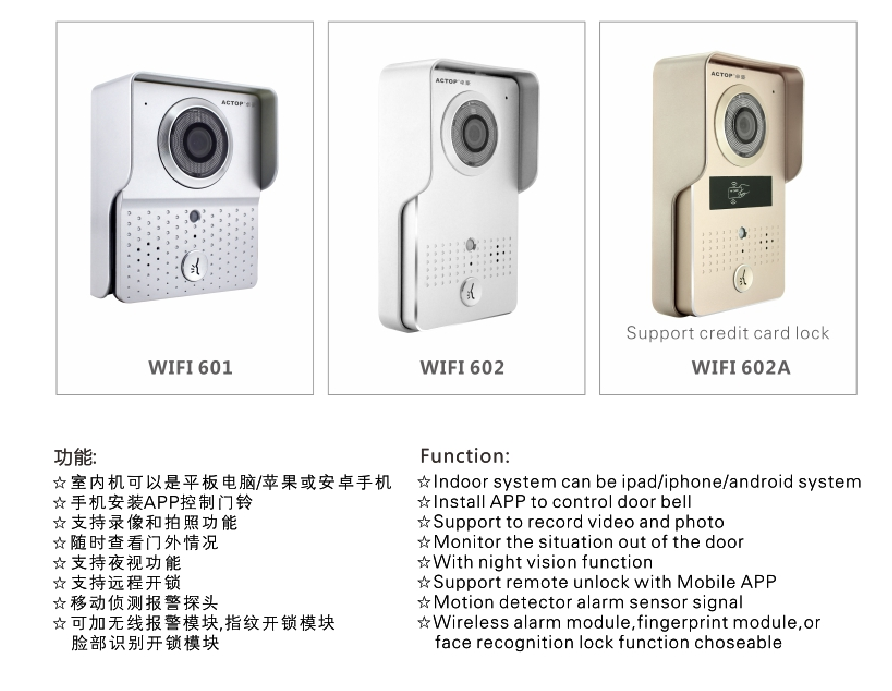With WiFi Video Door Phone, you can monitor your home from your mobile phone, tablet. You can see, hear and speak to vistors from anywhere and remote open door for visitors if need. WiFi doorbell free APP "WIFI BELL" lets you control your devices and review your videos and photos.Built-in PIR and night vision, lets you won't miss any visitor.OEM/ODM order is welcomed.
WiFi doorbell Functions
Advantage:
Only have one outdoor device, receiver is your smart phone
support both ios and Android devices
clear voice & image
take photo and video
Outdoor device can connect to internet by both wifi and internet cable
Description
Your mobile phone can intercom with the doorbell by connect to wifi or 3G/4G
1 camera can suppport 8 pcs smart phone at most
Camera is CMOS
With rainproof cover
Remote unlock the electornic lock
alarm function
connect to power by adapter
Hand free intercom
Night vision with 6IR lights in the camera
Specifications
Launch date: 2014, Aug
Camera: 1/4''/F2.4/110 degree
Distinguished: 420 line
Illumination: 2LUX
Light source: 6pcs infrared light
Power Standby: DC 12V 1A
Power dissipation Standby: working, 3.8W
Dimensions: 160*97*40mm
Material: ABS
Power input: 12V 1A
Lock output: 12V
Operating temperature: Subzero 10 degree to +55 degree
Operating Humidity: 10-90%
WIFI standard: IEEE802.11b/g/n
WIFI mode: DSSS/CCK 11Mbps
Channel Frequency: 2412~2484MHZ
RX sensitivity: Negative 85 dBm
TX power: 16 dBm
EVM: Negative 22 dBm
Sensor size: 1/4''
Sensor pixel: 0.3M
Lens angle: 110 degree
Aperture: F2.0mm
Night vision: 6*940NM IR LED

Door Phone Wifi,Wifi Wireless Video Door Phone,Wifi Video Door Phone,Wifi IP Video Door Phone
Shenzhen Zhuohao Intelligent Electronic Development Co., Ltd. , https://www.szactop-smart.com